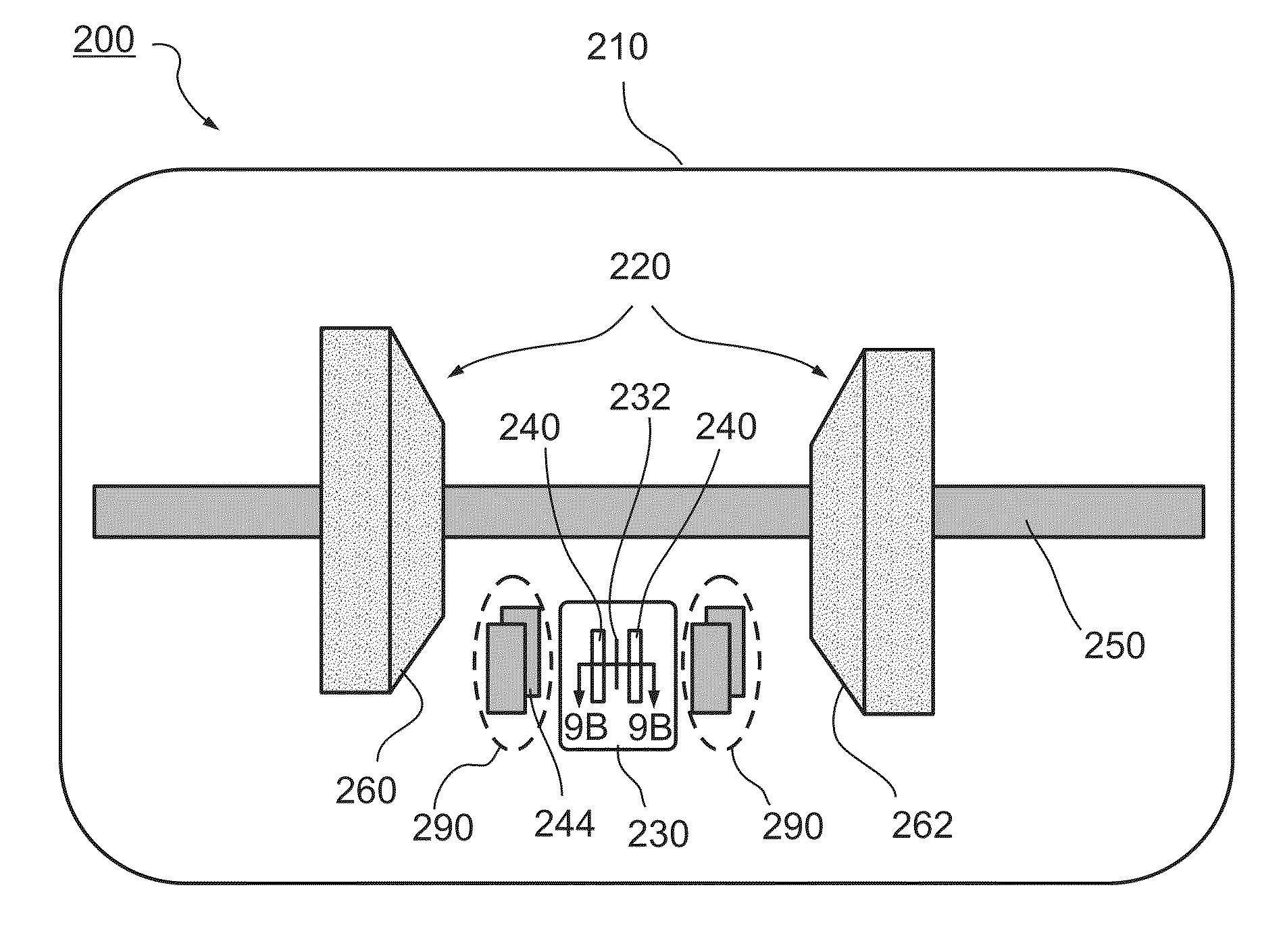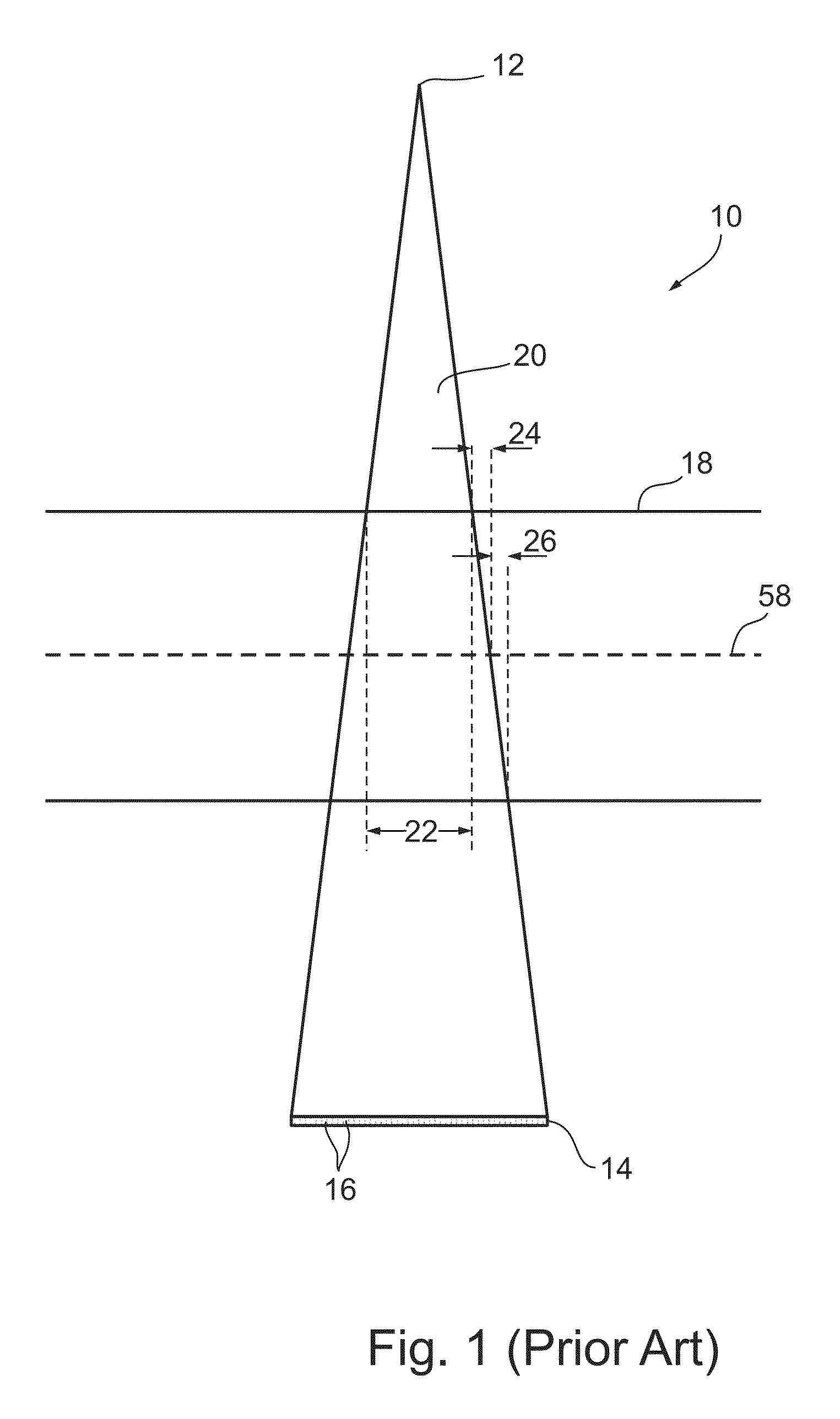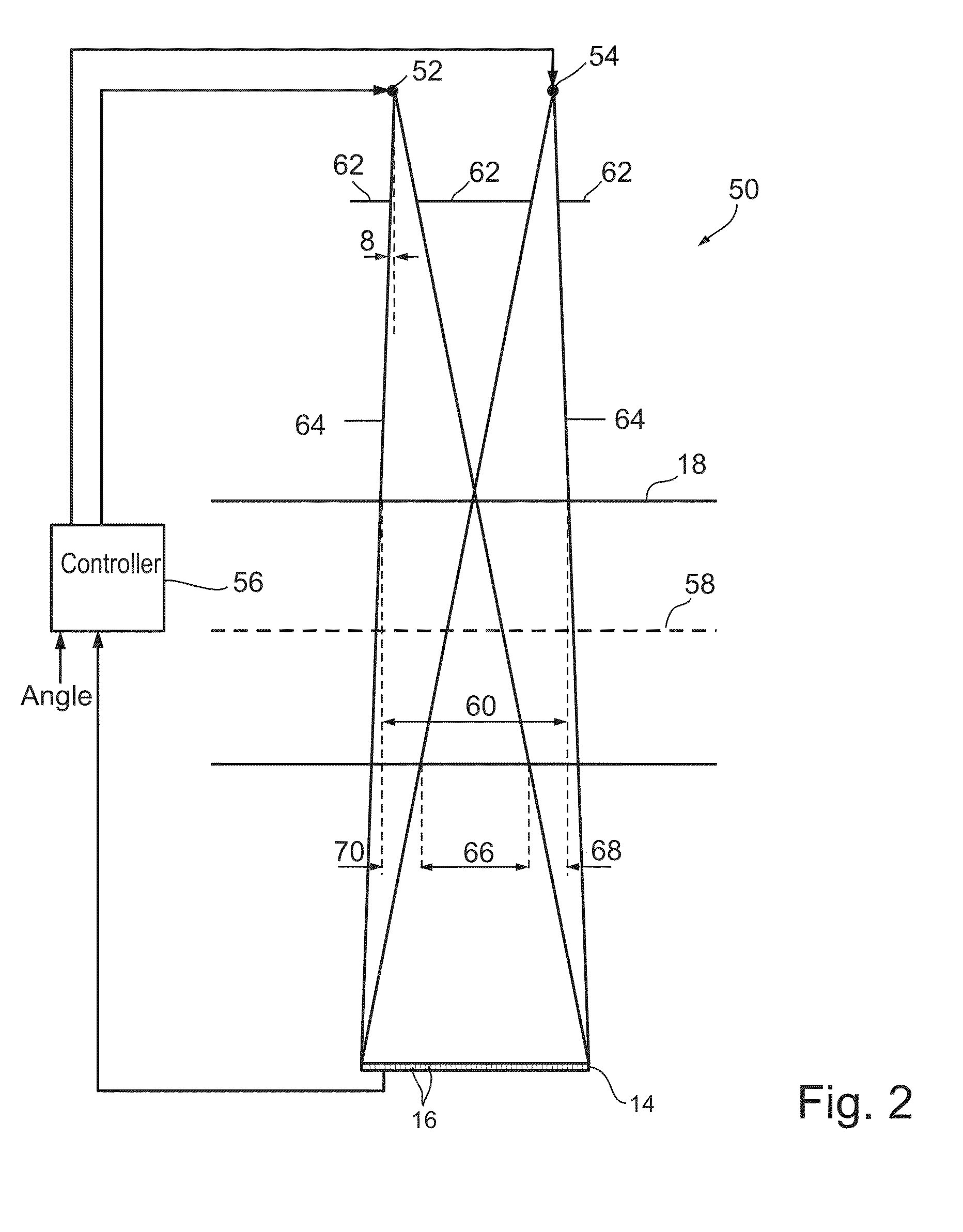X-ray tube
a technology of x-ray tubes and x-ray electrodes, which is applied in the direction of x-ray tube electrodes, cathode ray concentrating/focusing/directing, diagnostics, etc., can solve the problems of unable to allow single or half rotation cardiac ct scanning, difficult problems, and temporal resolution
- Summary
- Abstract
- Description
- Claims
- Application Information
AI Technical Summary
Benefits of technology
Problems solved by technology
Method used
Image
Examples
Embodiment Construction
[0089]FIG. 2 is a view similar to that of FIG. 1, showing a system 50 utilizing two sources 52 and 54 to apply radiation to patient while providing attenuation data in a half rotation of the sources or optionally a larger rotation angle, in accordance with an exemplary embodiment of the invention. FIG. 2 is to scale. For simplicity the support structures holding the sources 52 and 54 as well as other parts of system 50 are not shown.
[0090]As shown in FIG. 2, the beams both illuminate the entire axial extent of detector 14, when they are energized. A controller 56 controls the rotation of the sources and detector array 14 about an axis 58 and alternately energizes sources 52 and 54 and acquires data from the detectors that form a part of detector array 14. Data from the detectors, together with the rotation angle at which the data was acquired and the source corresponding to the data is stored and used to reconstruct a CT image of a region 60.
[0091]Collimator 62 limits the extent of ...
PUM
 Login to View More
Login to View More Abstract
Description
Claims
Application Information
 Login to View More
Login to View More - R&D
- Intellectual Property
- Life Sciences
- Materials
- Tech Scout
- Unparalleled Data Quality
- Higher Quality Content
- 60% Fewer Hallucinations
Browse by: Latest US Patents, China's latest patents, Technical Efficacy Thesaurus, Application Domain, Technology Topic, Popular Technical Reports.
© 2025 PatSnap. All rights reserved.Legal|Privacy policy|Modern Slavery Act Transparency Statement|Sitemap|About US| Contact US: help@patsnap.com



